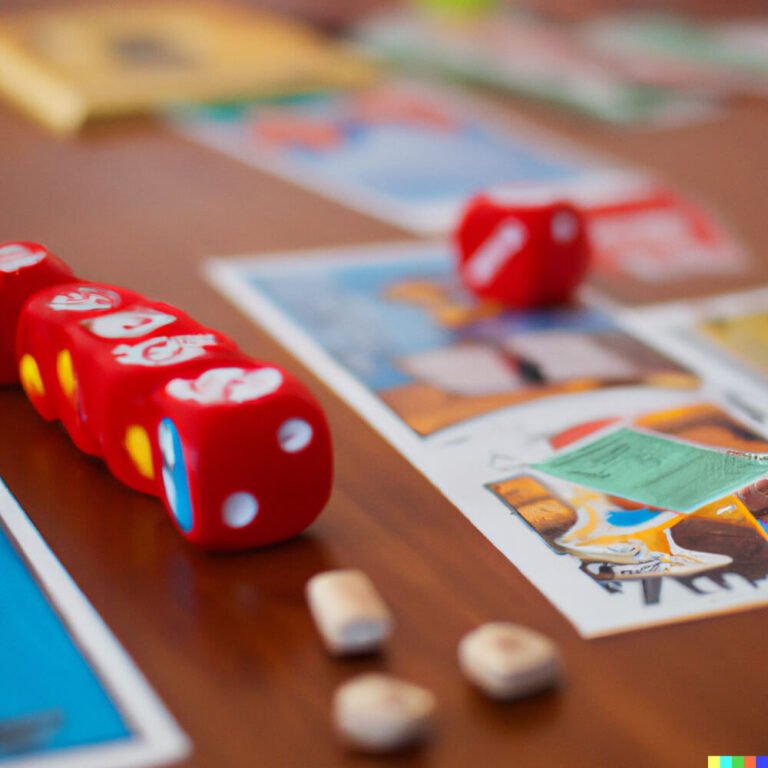The Classic Clue Game Board has captivated players for generations with its intriguing blend of mystery and deduction. From the moment the game begins, players find themselves transported to a mysterious mansion filled with secrets waiting to be uncovered. With its iconic rooms, intriguing characters, and mind-bending gameplay, the Classic Clue Game Board continues to hold a timeless appeal that keeps players coming back for more.
It’s no surprise that the Classic Clue Game Board has stood the test of time. Introduced in 1949 by Anthony E. Pratt, this beloved board game has become a staple in households around the world. Over the years, it has evolved and adapted to stay current with popular culture while still retaining its classic charm.
In this article, we will explore the history of the Classic Clue Game Board, tracing its evolution from its inception to modern editions and spin-offs. We will also delve into the gameplay itself, providing tips and strategies for unraveling the mysteries hidden within this enigmatic mansion. Join us as we unlock the secrets of the Classic Clue Game Board and discover why it remains a favorite among board game enthusiasts of all ages.
The Evolution of the Classic Clue Game Board
The Classic Clue Game Board has a rich history that spans almost 75 years, captivating generations of players with its intriguing gameplay and timeless appeal. This section will delve into the evolution of the Classic Clue Game Board, tracing its origins and highlighting the changes it has undergone over the years.
The Birth of Cluedo
Originally created in 1943 by British musician and inventor Anthony E. Pratt, the game was called “Cluedo” when it was first introduced in the United Kingdom. Pratt had been inspired by murder mystery party games and his own experience working in a munitions factory during World War II. He sought to create a game that would entertain people during air raids and bring families together in a time of uncertainty.
The original Cluedo board featured a mansion divided into various rooms, each connected by doorways. The suspects were represented by wooden pawns, and players could move them around the board to make suggestions on who committed the murder, where, and with what weapon. Despite its innovative gameplay mechanics, Cluedo initially struggled to find a publisher due to production restrictions caused by the war.
Clue: The American Adaptation
In 1949, Parker Brothers acquired the rights to publish Cluedo in North America. However, due to copyright issues with an existing trademark for “Cluett” shirts, Parker Brothers decided to change the name of the game to “Clue.” With minor modifications made to some character names and room titles, such as changing Miss Scarlet’s name from “Miss Scarlett” to “Miss Scarlet,” the game was adapted for an American audience.
The American adaptation also saw some changes in terms of artwork and design. The iconic artwork depicting the suspects on cards and on the box cover was created by illustrator Tom Lovell for Parker Brothers’ version of Clue. These changes gave Clue its own unique personality while maintaining the core gameplay and mystery-solving mechanics.
Throughout the years, Clue has continued to evolve. From limited editions featuring licensed characters, such as The Simpsons and Harry Potter, to updated versions with new suspects, weapons, and locations, the game has remained a popular choice for both casual players and hardcore board game enthusiasts. Its ability to adapt and stay relevant in an ever-changing gaming landscape is a testament to its enduring legacy.
Unraveling the Intrigue
The Classic Clue Game is a beloved board game that has captured the imaginations of players for decades. Its popularity lies in its captivating premise and challenging gameplay. In this section, we will delve into the rules and mechanics of the Classic Clue Game, guiding both new players and seasoned detectives on how to navigate this thrilling mystery.
To play the Classic Clue Game, each player takes on the role of one of six suspects: Miss Scarlet, Colonel Mustard, Mrs. White, Mr. Green, Mrs. Peacock, or Professor Plum. The objective is to determine who committed the crime, where it took place, and which weapon was used.
At the start of the game, three random cards are chosen without revealing their contents – one suspect card, one room card, and one weapon card – these cards represent the solution to the mystery. These three cards are placed in an envelope and put aside until the end of the game.
As players move around the mansion board, they will enter different rooms to make suggestions about what they believe might be in play regarding who committed the crime, where it occurred, and with what weapon. For example, a player may suggest that Miss Scarlet committed the murder in the Study with a Candlestick.
The other players must disprove this suggestion by showing any evidence they possess that refutes it. If a player holds one or more relevant cards (e.g., a character card or a weapon card), they secretly show only one card to refute part of that suggestion to their left-hand neighbor if possible.
Throughout gameplay, players can cross out possibilities on their detective sheets based on these suggestions and deductions made by others. The process continues as players move from room to room until someone is able to confidently make an accusation about all three aspects of the crime – suspect, location, and weapon.
If correct with all three elements exactly as stated (e.g., “I accuse Miss Scarlet of committing the murder in the Study with a Candlestick”), the player wins the game. However, if they make a false accusation, they are eliminated from further play.
Playing the Classic Clue Game requires both deductive reasoning and careful note-taking. By analyzing suggestions made by other players and eliminating possibilities, players must strive to identify the truth and solve the mystery. With its intriguing gameplay mechanics and immersive storyline, it is no wonder that the Classic Clue Game has remained a favorite among board game enthusiasts for generations.
- Choose one of six suspects
- Make suggestions based on suspect, location, and weapon
- Refute suggestions made by other players using evidence cards
- Cross out possibilities on detective sheet based on deductions
- Make an accusation when confident about all three aspects of the crime
- A correct accusation wins the game; a false accusation results in elimination.
The Iconic Characters
In the classic Clue game, players assume the roles of detectives as they try to solve a murder mystery. One of the key elements that make the game so intriguing is its lineup of unique and memorable characters. Each suspect brings their own personality and potential motive to the table, creating an engaging and immersive experience for players.
There are six main suspects in the classic Clue game: Miss Scarlett, Colonel Mustard, Mrs. White, Mr. Green, Mrs. Peacock, and Professor Plum. Each character has a distinct appearance and background story that adds depth to the gameplay. Players can choose to play as one of these suspects or take turns embodying each character throughout different games.
To aid in visualizing these characters, each suspect is depicted on cards included in the game with their name, portrait, and a brief biography. These details provide context for players as they try to uncover the truth behind the murder. The diverse cast of characters ensures that every game feels fresh and allows players to develop their own theories about who might be guilty.
| Suspect | Description |
|---|---|
| Miss Scarlett | A glamorous and ambitious femme fatale with a flair for manipulation. |
| Colonel Mustard | A distinguished military officer known for his sharp mind and commanding presence. |
| Mrs. White | The loyal housekeeper with a mysterious past who knows all the darkest secrets. |
| Mr. Green | An unassuming businessman with a knack for getting himself into questionable situations. |
| Mrs. Peacock | A sophisticated socialite who always manages to find herself at the center of scandalous rumors. |
| Professor Plum | An eccentric intellectual whose knowledge spans various fields, making him a formidable detective. |
As players navigate through the game’s mansion, gathering clues and eliminating suspects, they must carefully observe the actions and statements of each character. The intricate relationships between the suspects often add an additional layer of complexity to the mystery. By paying attention to these details, players can narrow down their list of potential culprits and ultimately solve the crime.
With their diverse personalities and fascinating backgrounds, the iconic characters of the classic Clue game board contribute to its enduring popularity. Whether it’s working alongside Colonel Mustard or suspecting Miss Scarlett’s ulterior motives, players are drawn into a world where everyone has something to hide. Meeting these suspects is just the beginning of an immersive and thrilling gaming experience that keeps fans coming back time and time again.
The Mysterious Mansion
One of the most captivating aspects of the Classic Clue Game Board is its intricate setting, a mysterious mansion filled with secrets and suspense. Each room within the mansion plays a crucial role in the game, providing players with vital clues as they race to solve the murder mystery. Let’s take a closer look at some of the iconic locations that make up this enigmatic game board.
- The Study: This is where Mr. Boddy, the victim, was last seen alive. The study offers a wealth of information for players to gather throughout their investigation. It often becomes a central hub for players to return to as they uncover new clues and narrow down their list of suspects.
- The Library: With its rows upon rows of books, the library holds not only knowledge but also hidden secrets. Players may stumble upon important documents or notes left behind by Mr. Boddy that could shed light on the murderer’s identity.
- The Ballroom: In this elegant and grandiose space, players can dance their way into uncovering valuable clues. The ballroom is known for hosting lavish parties, making it an ideal location for suspects to meet and exchange information without arousing suspicion.
Moving further through the mansion, we encounter:
- The Conservatory: A place of serenity with an assortment of beautiful plants and flowers, it serves as an unexpected hiding spot for clues or even weapons. Players must be vigilant when exploring this tranquil room.
- The Billiard Room: Here lies another key space in solving the mystery. Known for its prestigious billiards table, this room often reveals hints about hidden passageways or potential alibis.
- The Kitchen: As the heart of the mansion, the kitchen holds more than just scrumptious delights. Players may uncover missing utensils that can be connected to potential weapons, making it a critical location in exposing the truth.
Each room within the Classic Clue Game Board contributes to the immersive experience and meticulous detective work required to solve the murder. Every detail has been carefully designed to provide players with opportunities for deduction and strategic thinking. With an understanding of each location’s significance, players can navigate through the mansion with purpose and unravel the elusive mystery at hand.
Stay tuned as we delve even further into the secrets within this captivating game board, exploring the weapons used in the crime and discovering strategies that will help you become a master detective in “Unveiling the Weapons: Delving into the Arsenal of the Classic Clue Game Board“.
From the Conservatory to the Kitchen
In the classic Clue game, the setting is a mysterious mansion filled with hidden secrets and potential suspects. One of the most fascinating aspects of the game is exploring the various rooms of the mansion as you try to uncover clues and solve the murder mystery. From grand ballrooms to secret passages, each room has its own unique charm and potential for intrigue.
One iconic room in the Clue game board is the Conservatory. This elegant space is filled with lush greenery and beautiful plants, providing a serene and peaceful atmosphere. However, don’t be fooled by its tranquil appearance, as this room can quickly become a hotbed of suspicion and intrigue. Players must carefully investigate the Conservatory in their search for clues that could lead them closer to solving the murder.
Another important room in Clue is the Kitchen. This bustling space is where delicious meals are prepared for the guests of the mansion. Amidst pots and pans clattering, players must dig through this busy room to find evidence that could crack open the case. With knives and other utensils readily available, it’s important for players to discern whether these items are innocent tools or deadly weapons.
| Room | Description |
|---|---|
| Conservatory | An elegant room filled with plants and greenery, creating a serene atmosphere. |
| Kitchen | A bustling space where meals are prepared; players must navigate through pots, pans, and utensils. |
As players move from room to room in Clue, they must evaluate each location carefully, paying attention to any subtle hints or clues that may be hidden within their surroundings. Each room offers a unique opportunity to gather information and eliminate suspects, bringing players closer to solving the mystery at hand.
Exploring the different rooms in the Clue game board is not only an exciting part of gameplay but also adds depth and richness to the overall experience. Whether you find yourself in the tranquil Conservatory or in the hustle and bustle of the Kitchen, each room holds its own significance and potential for uncovering crucial evidence. So, open up those secret passages and delve into the intriguing world of Clue as you navigate through each captivating room.
Unveiling the Weapons
One of the key elements of the Classic Clue Game Board is the wide variety of weapons that players can use to eliminate suspects and solve the mystery. From candlesticks to lead pipes, these weapons not only add an exciting element to the game, but also play a crucial role in uncovering the truth.
Arsenal of Weapons
The Classic Clue Game Board features a total of six weapons that players can use during gameplay. These weapons include:
- Rope: A length of sturdy rope that can be used for strangulation.
- Lead Pipe: A heavy metal pipe that can deliver a lethal blow.
- Knife: A sharp blade that provides a silent and deadly attack.
- Candlestick: A decorative candle holder that doubles as a bludgeoning tool.
- Revolver: A classic firearm capable of inflicting fatal gunshot wounds.
- Wrench: A versatile tool that can be used for both repairing and harming.
Weapon Strategies
Each weapon has its own advantages and disadvantages, which make strategic decision-making an important aspect of the game. Some weapons, like the revolver or knife, allow for quick and discreet kills, while others, such as the lead pipe or wrench, offer more brute force capabilities.
Players must carefully consider their choice of weapon based on various factors such as proximity to suspects, potential witnesses, and possible alibis. Each weapon carries its own level of suspicion and using a weapon that matches one’s own character card may raise fewer eyebrows among other players.
Weapon Location
In addition to choosing the right weapon for each situation, knowing where to find them on the Classic Clue Game Board is equally important. The Weapon cards are placed facedown in designated rooms at random at the beginning of each game.
The rooms where weapons may be found include:
1. Study 2. Hall 3. Lounge 4. Conservatory 5. Library 6. Billiard Room 7. Dining Room 8. Ballroom 9. Kitchen Players must strategically move throughout the mansion, gathering clues and eliminating possible weapons and suspects from their list of possibilities.
With an array of deadly weapons at their disposal, players must carefully consider which weapon to use, where to find them, and how to employ them effectively in order to solve the mystery behind the Classic Clue Game Board’s crimes.
The Mind-Bending Strategy
One of the key elements that makes the Classic Clue game so captivating and enduring is its emphasis on deduction. The game challenges players to use their analytical skills and deductive reasoning to solve the mystery at hand. To become a true master of Clue, one must understand and employ effective strategies that lead to victory.
First and foremost, attentiveness is crucial when playing Clue. Pay close attention to every move made by your opponents, as well as your own. Use this information to narrow down the possible combinations of suspect, weapon, and room. By carefully observing other players’ actions and deductions, you can gain valuable insights into the clues they possess or lack.
Another vital strategy in Clue is making optimal use of your detective’s ability to enter rooms. Strategically choosing which rooms to enter can significantly narrow down the list of possible solutions. Focus on gaining access to rooms that have multiple doorways connecting them with other rooms. This will increase your chances of obtaining more valuable information about various suspects, weapons, and locations.
When it comes to suggesting solutions, it’s important to be systematic in your approach. Start by making suggestions that eliminate multiple possibilities at once. For example, if you have deduced that Professor Plum is not involved in the crime, suggest him along with a weapon or room you are uncertain about. This way, if another player shows you one of those cards for elimination, you can quickly cross off both suspect and card type from your mental list.
In summary, mastering the art of deduction in Clue requires sharp observation skills, strategic room choices, and systematic suggestion-making. With practice and experience, players can develop their own unique approaches and tactics that increase their chances of solving the mystery first. The mind-bending nature of this strategy aspect adds another layer of excitement to an already thrilling board game experience.
Expanding the Experience
Throughout its long-standing history, the classic Clue game board has spawned a range of innovative editions and spin-offs that have captivated players from all walks of life. These variations on the original game have not only breathed new life into the beloved murder mystery concept but also introduced exciting twists and elements to keep players engaged and enthralled.
From themed versions to updated gameplay mechanics, these innovative editions and spin-offs offer a fresh take on an already timeless classic.
One popular example of an innovative edition is the “Clue Jr.” series, specially designed for younger players. This version features simplified rules, colorful illustrations, and an age-appropriate storyline that allows children to exercise their deductive reasoning skills in a format they can easily grasp. By incorporating beloved characters such as Miss Scarlet’s niece Socks or Mrs. Peacock’s nephew Gus, this edition offers a fun experience tailored specifically for younger enthusiasts.
In addition to age-specific editions, numerous themed variations have been released over the years to cater to different interests. From movie tie-ins like “Clue: Harry Potter Edition” or “Clue: The Big Bang Theory” to location-based versions such as “Clue: London Detective Edition,” these adaptations inject fresh excitement by utilizing well-known franchises or incorporating unique settings that add depth and immersion to gameplay.
By giving players opportunities to explore familiar worlds while still unraveling complex mysteries, these themed editions provide fans with a chance to experience their favorite stories in a whole new way.
Furthermore, innovative spin-offs have emerged that redefine how Clue can be played. One notable example is “Clue DVD Game,” which combines traditional detective work with modern technology.
In this version, players watch video clips featuring animated characters who come alive within the mansion setting as they provide crucial information about suspects, weapons, and rooms. The interactive nature of this spin-off brings a new level of immersion and excitement, allowing players to feel like they are truly part of the action as they solve the mystery.
The Enduring Legacy
In conclusion, the classic Clue game board has undeniably left an enduring legacy in the world of board games. Despite the passage of time and the introduction of countless new games, Clue continues to captivate players of all ages with its timeless appeal. The combination of mystery, strategy, and deduction has made it a beloved classic that stands the test of time.
One of the key factors contributing to Clue’s enduring legacy is its ability to adapt and evolve. Over the years, there have been numerous editions and spin-offs of the classic game, each adding a unique twist while preserving the core gameplay elements that have made Clue so iconic. Whether it be themed versions based on popular movies or innovative editions introducing new characters or locations, Clue has successfully remained relevant in an ever-changing gaming landscape.
Furthermore, Clue’s immersive atmosphere and rich storytelling have played a significant role in its continued popularity. From the moment players step into the mysterious mansion on the game board, they are transported into a world filled with intrigue and suspense. The iconic characters, detailed locations, and array of weapons further enhance this immersive experience, engaging players on both a mental and emotional level.
Ultimately, it is this winning combination of factors – from its strategic gameplay to its immersive atmosphere – that explains why the classic Clue game board remains a timeless favorite among board game enthusiasts. As long as people continue to enjoy solving mysteries and testing their deductive skills, there will always be a place for this beloved classic in our gaming collections. So gather your friends and family for a night of detective work because Clue is here to stay.
Frequently Asked Questions
What is the original Clue board game?
The original Clue board game, also known as Cluedo in some countries, is a classic murder mystery game that was first published by Waddingtons in the United Kingdom in 1949. It was designed by Anthony E. Pratt and has since become one of the most popular and well-known board games worldwide.
Is Clue a classic board game?
Yes, Clue is considered a classic board game. It has been enjoyed by generations of players since its release and has stood the test of time.
Its lasting popularity can be attributed to its unique blend of strategy, deduction, and suspenseful gameplay. The game’s iconic characters, such as Colonel Mustard and Miss Scarlet, have become well-known figures in popular culture.
How do you play the classic clue board game?
In the classic Clue board game, players take on the role of detectives trying to solve a murder mystery that occurred inside a mansion. Each player represents one of the colorful suspects and must use deductive reasoning skills to figure out who committed the crime, where it took place, and which weapon was used.

I love playing all kinds of games – from classics like Monopoly to modern favourites like Ticket to Ride.
I created this blog as a way to share my love of board games with others, and provide information on the latest releases and news in the industry.





